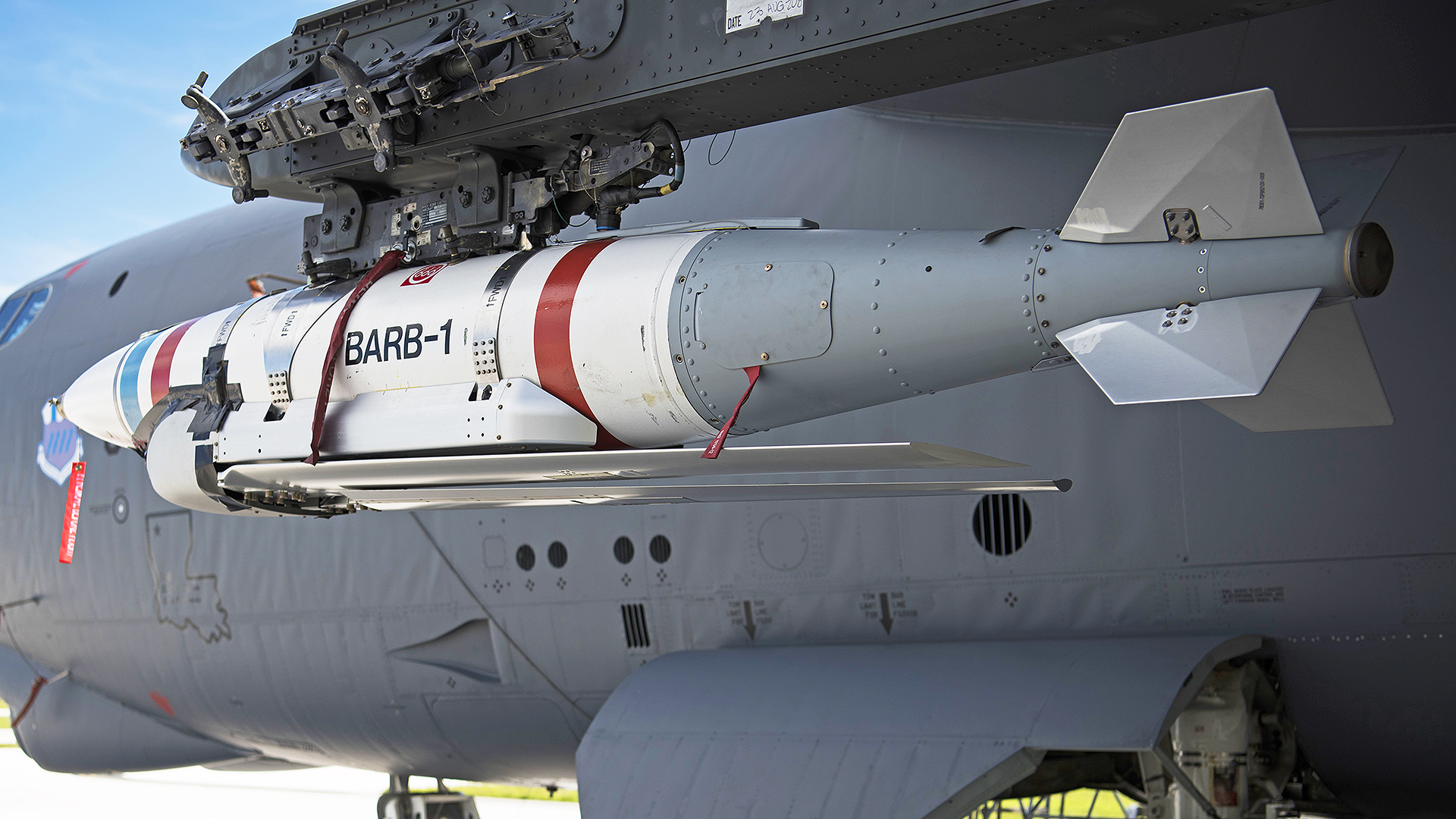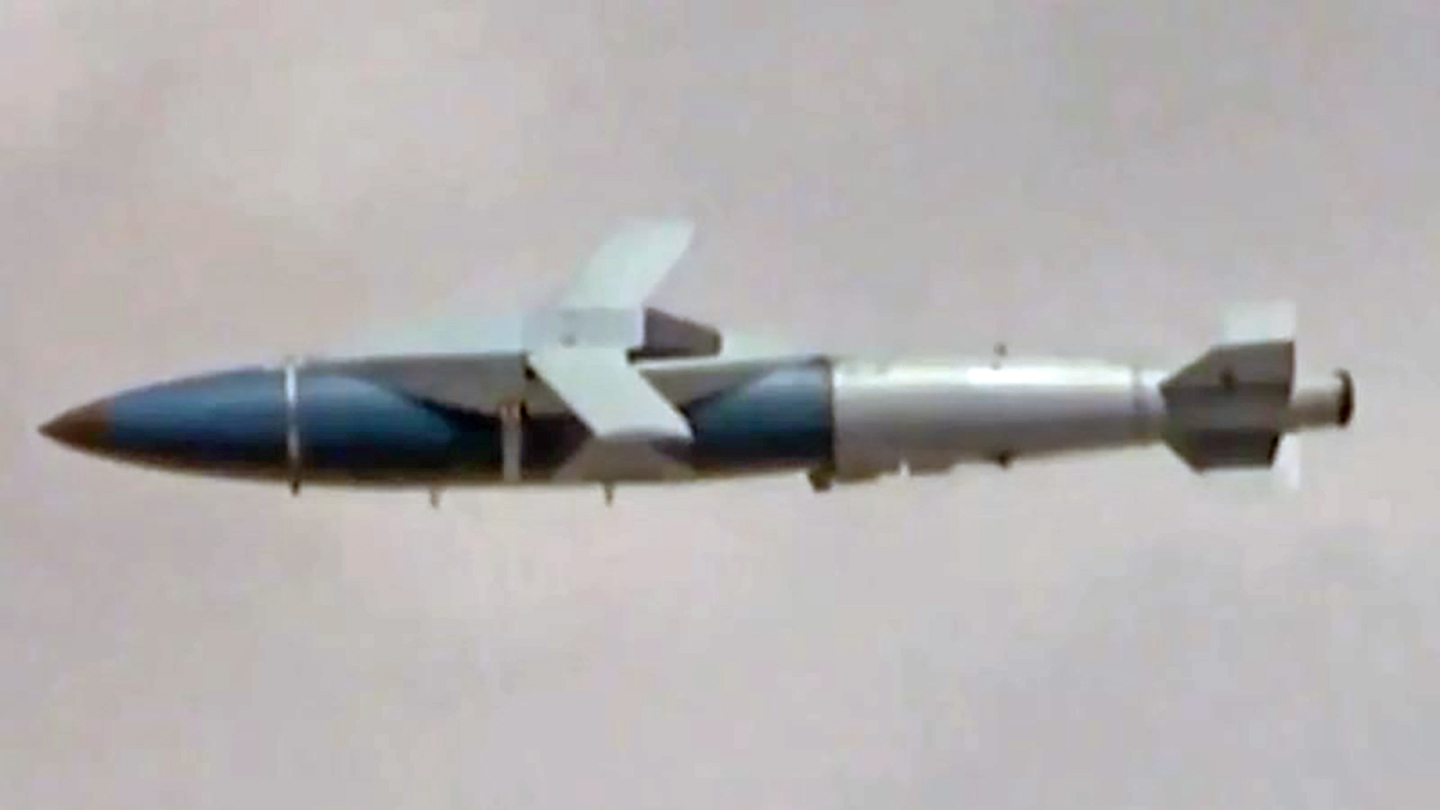The Ukrainian Air Force has confirmed that it’s now using the U.S.-supplied Joint Direct Attack Munition, or JDAM, air-launched precision-guided weapon against Russian forces in the country. The announcement follows confirmation from U.S. officials that the long-range JDAM-ER version of the weapon had been supplied to Ukraine, providing the ability to hit targets up to 45 miles away with considerable destructive power, the implications of which The War Zone has previously explored in detail.
“We use JDAM bombs,” Yuriy Ignat, the spokesman for the Air Force Command of the Ukrainian Armed Forces, told Ukrainian television today. “These are Western-style bombs with which our air force successfully strikes important targets. These bombs are slightly less powerful, but extremely accurate. I would like to have more such bombs for success at the front,” Ignat added.
The meaning behind the JDAMs being “slightly less powerful” is unclear. However, it may suggest that the weapons supplied to Ukraine are based on 1,000-pound or even 500-pound bomb bodies, rather than the larger 2,000-pound bombs with which they are also compatible. So far, there are no details of which versions of the bomb are used by Ukraine, with no photographic evidence of the weapons in use, or of any recovered wreckage that could provide indications of this.

Up until now there has been little indication of exactly how many JDAM kits have been supplied, although the numbers are thought to be relatively small, with one U.S. official stating that Ukraine has “enough to do a couple of strikes.”
What little we do know about the JDAMs supplied to Ukraine includes the fact that the stockpile includes Joint Direct Attack Munition-Extended Range variants, or JDAM-ERs, which uniquely feature pop-out wing kits. This means they can hit targets at distances of up to 45 miles, compared with up to 15 miles for a standard JDAM. At this point, there is no confirmation that Ukraine has also received standard JDAMs, too, although it’s certainly possible and these versions of the weapon are also far more plentiful, in general.
A video showing the 2,000-pound-class Quickstrike-ER naval mine, which uses the same pop-out wing kits as found on the JDAM-ER:


In the past, we have described how JDAM kits are designed to be mated to various types of Mk 80-series dumb bombs, and other munitions designed around that same form factor.

The disclosure about the JDAM-ER version came earlier this month from U.S. Air Force Gen. James Hecker, head of U.S. Air Forces in Europe (USAFE), as well as NATO’s Allied Air Command and U.S. Air Forces Africa (AFAFRICA).
“Recently, we’ve just gotten some precision munitions [to Ukraine] that had some extended range and go a little bit further than the gravity drop bomb and has precision [guidance],” Hecker said, during a media round table that The War Zone attended on March 6. “That’s a recent capability that we were able to give them probably in the last three weeks.” Gen. Hecker confirmed to The War Zone that he was specifically speaking about the JDAM-ER.

Around the same time, videos began to appear on social media that seem to be consistent with the use of JDAM-series weapons. While it’s not possible to verify whether the following clips actually show JDAM strikes, it remains a definite possibility.
Another big mystery that continues to surround the Ukrainian JDAMs is exactly what aircraft platform is launching them. Likely candidates comprise the Ukrainian Air Force’s MiG-29 Fulcrum and Su-27 Flanker fighters, as well as the limited number of Su-24 Fencers that provide longer-range strike capabilities. An outside possibility is the Su-25 Frogfoot that otherwise mainly employs unguided rockets in the ground-attack role.
Notably, at least some of Ukraine’s MiG-29s and Su-27s have previously undergone integration of U.S.-made AGM-88 High-speed Anti-Radiation Missiles (HARM) and broadly similar modifications could have been made to permit use of the JDAM.

Regardless of the launch platform, it seems almost certain that the integration process will have involved some kind of workaround that erodes, at least to some degree, the maximum range of the JDAM-ER. This is something that Gen. Hecker seems also to have alluded to, as well:
“I don’t want to get into the exact tactics,” Hecker said, “but obviously, the lower you are, and the further away from the surface-to-air missiles that can detect you because of the curvature of the Earth” affect how far the bomb can travel. “There are tactics where you can go in low and do some things… and get back.”
This could also correspond with our previous suggestion that Ukrainian pilots may be flying toward their objectives at low level, before releasing the JDAM-ER in a pop-up maneuver and lofting it to the target.
Whatever the limitations, and the seemingly small numbers of munitions, it’s clear that the JDAM-ER offers some significant new capabilities to the Ukrainian Armed Forces. While we have discussed these capabilities in depth in the past, the weapon’s main significance lies in its combination of precision fire-and-forget guidance, long range, and destructive power. Regarding the latter, the JDAM-ER packs considerably more explosive than the U.S.-supplied High Mobility Artillery Rocket Systems (HIMARS) and variants and derivatives of the M270 Multiple Launch Rocket System (MLRS) that Ukraine otherwise uses to hit Russian targets at greater ranges.
If the standard JDAM is also in the Ukrainian inventory, that would limit strikes to very near the front lines. On the other hand, as mentioned previously, the much greater availability of the basic version of the JDAM would ensure that many more of these precision-guided munitions are available to the Ukrainian Air Force.
Plenty of questions remain about the particular type of JDAMs supplied to Ukraine and how exactly they are being put to use. However, with official confirmation from the Ukrainian Air Force that these weapons are now being used in combat, we might not have to wait too much longer to find out more details.
Contact the author: thomas@thedrive.com
